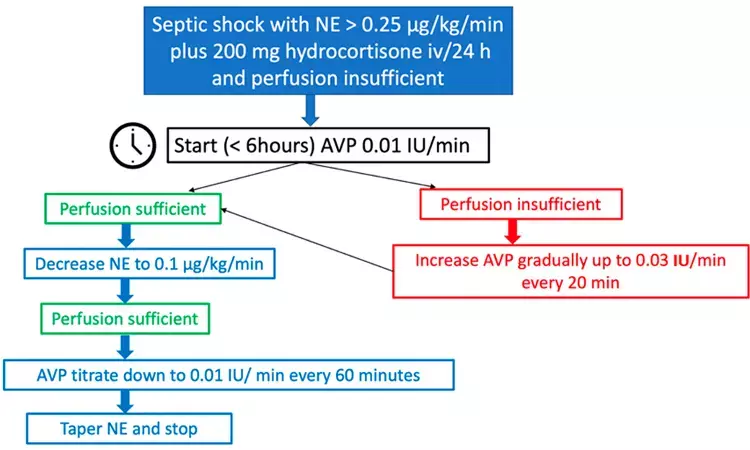- Home
- Medical news & Guidelines
- Anesthesiology
- Cardiology and CTVS
- Critical Care
- Dentistry
- Dermatology
- Diabetes and Endocrinology
- ENT
- Gastroenterology
- Medicine
- Nephrology
- Neurology
- Obstretics-Gynaecology
- Oncology
- Ophthalmology
- Orthopaedics
- Pediatrics-Neonatology
- Psychiatry
- Pulmonology
- Radiology
- Surgery
- Urology
- Laboratory Medicine
- Diet
- Nursing
- Paramedical
- Physiotherapy
- Health news
- Fact Check
- Bone Health Fact Check
- Brain Health Fact Check
- Cancer Related Fact Check
- Child Care Fact Check
- Dental and oral health fact check
- Diabetes and metabolic health fact check
- Diet and Nutrition Fact Check
- Eye and ENT Care Fact Check
- Fitness fact check
- Gut health fact check
- Heart health fact check
- Kidney health fact check
- Medical education fact check
- Men's health fact check
- Respiratory fact check
- Skin and hair care fact check
- Vaccine and Immunization fact check
- Women's health fact check
- AYUSH
- State News
- Andaman and Nicobar Islands
- Andhra Pradesh
- Arunachal Pradesh
- Assam
- Bihar
- Chandigarh
- Chattisgarh
- Dadra and Nagar Haveli
- Daman and Diu
- Delhi
- Goa
- Gujarat
- Haryana
- Himachal Pradesh
- Jammu & Kashmir
- Jharkhand
- Karnataka
- Kerala
- Ladakh
- Lakshadweep
- Madhya Pradesh
- Maharashtra
- Manipur
- Meghalaya
- Mizoram
- Nagaland
- Odisha
- Puducherry
- Punjab
- Rajasthan
- Sikkim
- Tamil Nadu
- Telangana
- Tripura
- Uttar Pradesh
- Uttrakhand
- West Bengal
- Medical Education
- Industry
Norepinephrine as initial vasoactive agent has lower mortality rates in Pediatric Septic Shock compared to Epinephrine: JAMA

Researchers have found in a new study that Children without known cardiac dysfunction who were treated with norepinephrine as the initial vasoactive agent for septic shock showed lower mortality rates compared to those treated with epinephrine, though both groups had similar rates of major adverse kidney events within 30 days (MAKE30). Further prospective studies are required to confirm whether norepinephrine should be the preferred first-line agent in such cases.
There is no consensus and wide practice variation in the choice of initial vasoactive agent in children with septic shock. A study was done to determine whether receipt of epinephrine compared with norepinephrine as the first vasoactive medication administered is associated with improved outcomes among children with septic shock without known cardiac dysfunction.
This single-center, retrospective cohort study used propensity score matching to examine encounters in which a patient was diagnosed with septic shock and required a vasoactive infusion within 24 hours of ED arrival at a freestanding quaternary care children’s hospital. Participants included patients aged 1 month to 18 years who presented to the ED and were diagnosed with septic shock without known cardiac dysfunction and began an epinephrine or norepinephrine infusion within 24 hours of ED arrival between June 1, 2017, and December 31, 2023. Data were analyzed from March 1 to December 31, 2024.
The primary outcome was major adverse kidney events by 30 days (MAKE30). Secondary outcomes were 30-day in-hospital mortality, 3-day mortality, need for kidney replacement therapy or persistent kidney dysfunction, endotracheal intubation, mechanical ventilation days, extracorporeal membrane oxygenation, and hospital and intensive care unit length of stay. Primary and secondary outcomes were assessed with the χ2 test of proportions for binary variables and Wilcoxon rank sum test for continuous variables.
Results Among 231 included encounters, the median (IQR) age was 11.4 (5.6-15.4) years, 126 were female (54.6%), and 142 had a medical history that predisposed them to sepsis (61.5%). Most (147 [63.6%]) initially received an epinephrine infusion and 84 (36.4%) received norepinephrine. In the epinephrine group, 9 of 147 (6.1%) met the outcome of MAKE30 and 6 of 147 (4.1%) died within 30 days. In the norepinephrine group, 3 of 84 (3.6%) met MAKE30 and there were no deaths. After inverse probability of treatment weighting, there were no significant differences in the primary outcome, MAKE30. With 2:1 propensity matching, epinephrine was associated with greater 30-day mortality compared with norepinephrine (3.7% vs 0%; risk difference: 3.7%; 95% CI, 0.2%-7.2%). In this study, those receiving epinephrine had greater 30-day mortality but no difference in MAKE30. Prospective, confirmatory studies are needed to determine if norepinephrine should be the first-line vasoactive agent in pediatric septic shock.
Reference:
Eisenberg MA, Georgette N, Baker AH, Priebe GP, Monuteaux MC. Epinephrine vs Norepinephrine as Initial Treatment in Children With Septic Shock. JAMA Netw Open. 2025;8(4):e254720. doi:10.1001/jamanetworkopen.2025.4720
Dr. Shravani Dali has completed her BDS from Pravara institute of medical sciences, loni. Following which she extensively worked in the healthcare sector for 2+ years. She has been actively involved in writing blogs in field of health and wellness. Currently she is pursuing her Masters of public health-health administration from Tata institute of social sciences. She can be contacted at editorial@medicaldialogues.in.
Dr Kamal Kant Kohli-MBBS, DTCD- a chest specialist with more than 30 years of practice and a flair for writing clinical articles, Dr Kamal Kant Kohli joined Medical Dialogues as a Chief Editor of Medical News. Besides writing articles, as an editor, he proofreads and verifies all the medical content published on Medical Dialogues including those coming from journals, studies,medical conferences,guidelines etc. Email: drkohli@medicaldialogues.in. Contact no. 011-43720751


